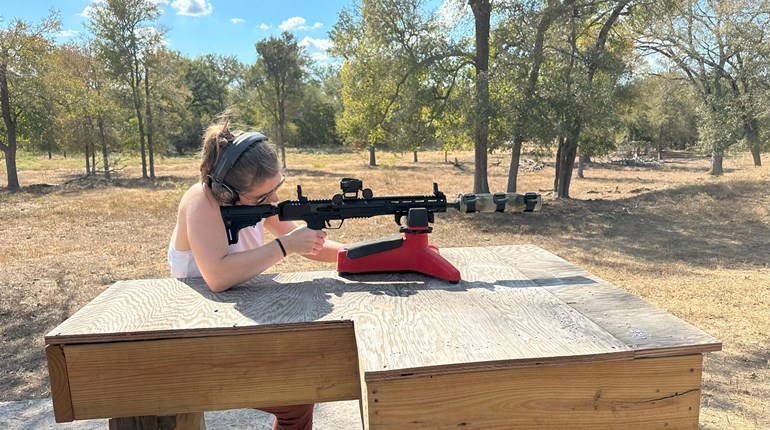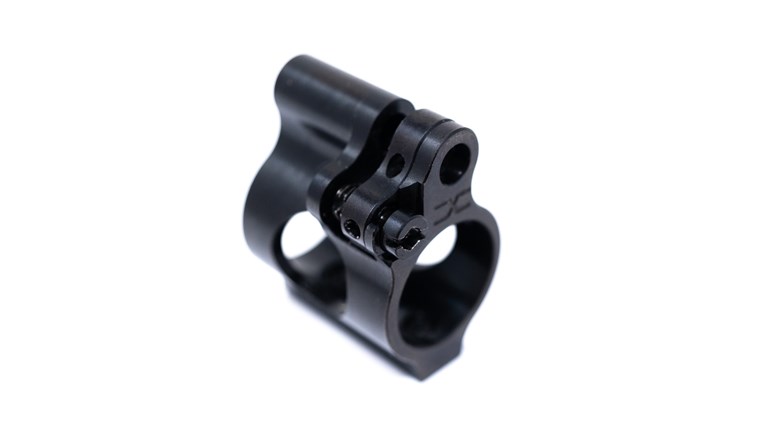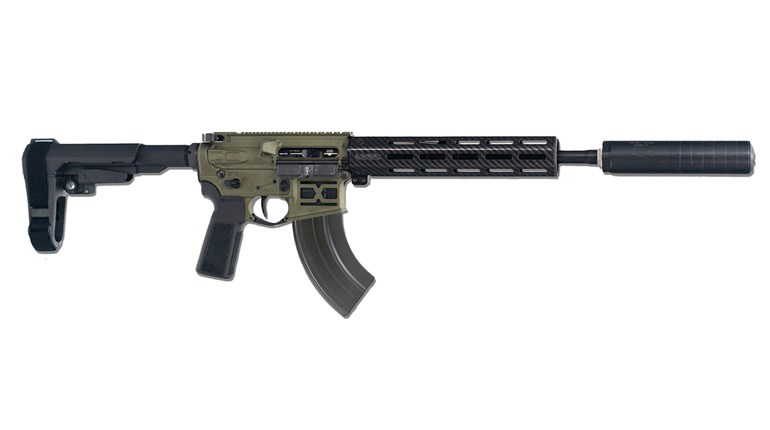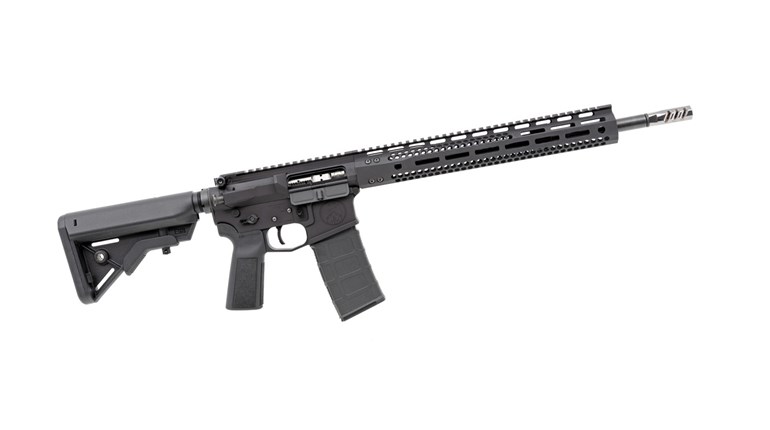
“First Gear” returns to our short/light Modern Sporting Rifle build in earnest today. We hope the last couple of weeks got you down the road on a build of your own, or gave you some ideas for gunny gifts; maybe both.
However that worked out, today we arrive at choosing time for perhaps the most crucial component in our, or perhaps any, rifle. Function is certainly critical in a semi-auto, and many components have important roles in making a Stoner-pattern run well—our Timney trigger and Law Tactical/ARFX stock combo being obvious examples. But it’s all for naught if bullets don’t hit where they’re aimed with both consistency and precision. That’s the only way to quiet the sniggering bolt guys, too … but we digress.

Ergo, we choose a barrel.
<<Cue tape: collective sigh>>
And no, we are not embarking on a (trust us, very lengthy) thesis on barrel vs. gas system length, dwell time, suppressor compatibility or DGI vs. piston systems. Rather, we’ll explain what we’re choosing, and why, for a short, light rifle. (But if you want such an exposition, here’s a particularly lucid gem from our friend Steve Adelmann over at Shooting Illustrated.)
Our “light” criterion drives us toward a thin profile, though we’re staying away from what’s commonly called “pencil.” As much as we love the low weight, in 25 years of trying we’ve never seen one of them hold well for even smallish groups—they simply heat up too fast. Granted, they cool down in a hurry too, and accuracy can be superb. But we’re wanting a couple of mag’s worth of MOA-type precision, so a little more “thermal inertia” is called for, and that means thickness.
It also means length, at least in our experience, so we’re giving back a couple of inches that we bought with our Law Tactical/ARFX Skeleton stock combo and going with an 18-incher. Don’t get us wrong: We know there are superbly accurate shorter barrels out there, but for many interrelated reasons that rapidly get complex, versatile accuracy is simply harder to achieve. More bullet weights and shapes will work, as a general rule, when more rifling is in play.
We’re also eschewing the 1-in-7 craze: We have no plan to shoot anything over 80 grains, and several ballistic calculators show we’re good at 1-in-8. Note, too, that it’ll last longer.

There is a modest technical aspect to this choice as well, though we think we can spare you the fire-hose treatment: 18 inches is also the shortest barrel that mates well with a rifle-length gas system. We think this is a clear aid to accuracy for the time-honored reason (just plain longer), but also for a Stoner gas system reason—dwell time goes down. If you pay attention to the AR/MSR accuracy nuts, you see them going to longer-than-standard gas systems to put that port progressively closer to the end of the barrel and knock down the dwell interval. Simply, this is the time the projectile spends in the barrel beyond the gas-venting, action-driving port—and less is better.
There’s also a general opinion—with which we agree—that rifle length systems are the smoothest-recoiling as well. 5.56 generally draws no flack in this department anyway, but proponents of shorter variants also claim faster cycling. Our experience here says they’re right, so smiles all around. But our experience also says we’re just not fast enough to take advantage of that plus, so by yet another route, we arrive back at accuracy considerations über alles.
Enough already? Well, we think so, and our choice is therefore a Faxon “Gunner” light hybrid. We were introduced to these by our friends at Robar: They spotted us a 16-inch rifle a while back that routinely shot just over .5 MOA with delectable ease. In our average hands, it’s a reason to hope for even better if our 18-inch musings hold up. We’re one step closer to “bang.”
A blessed and Merry Christmas to one and all, too.
Part 1 Part 2 Part 3 Part 4 Part 6 Part 7 Part 8 Part 9
Visit Faxon at www.faxonfirearms.com. (MSRP $189)

































